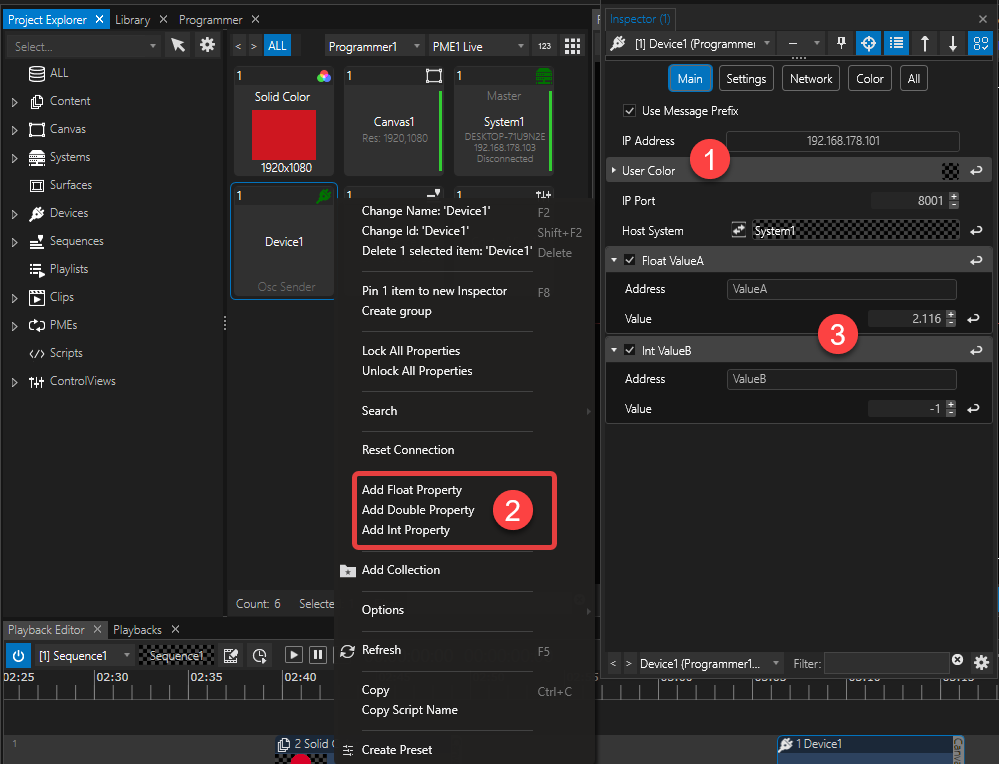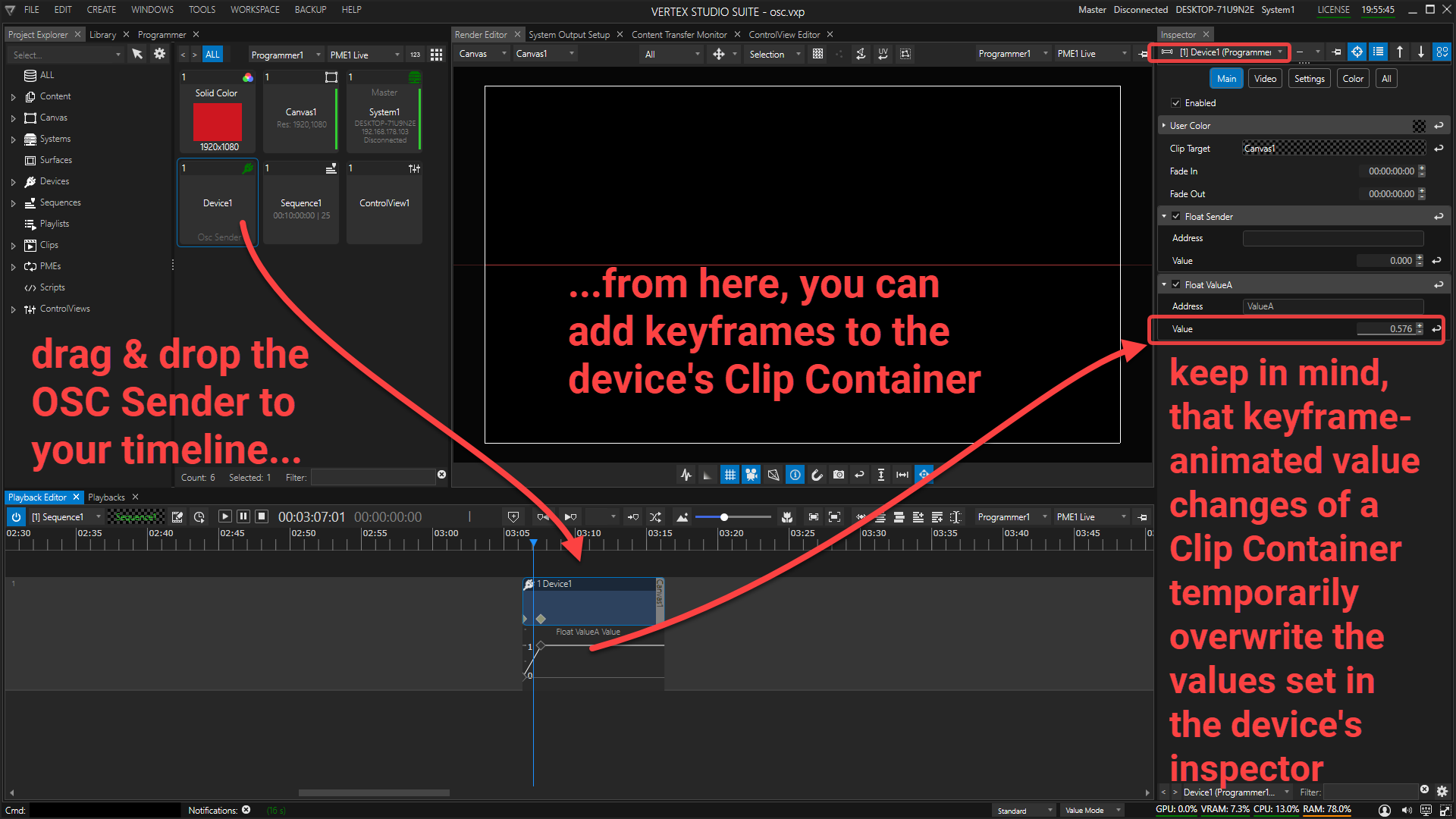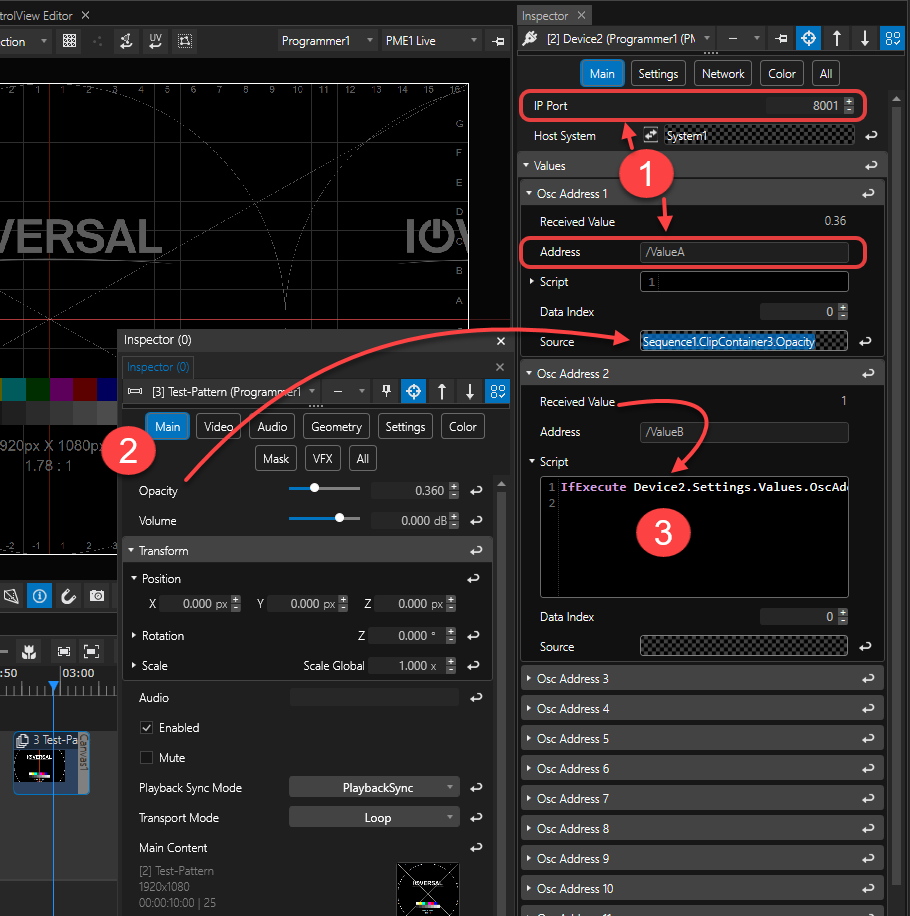•Open Sound Control protocol can be employed to control property values in VERTEX
•Device Library holds both an OSC Sender- and Receiver Device
•Value changes transmitted by OSC Sender Devices can be animated with keyframes, whereas received value changes can be used in controls, nodes, scripts etc.
Workflows
Go to Library > Devices and type OSC into the search filter. Then add the desired OSC Device to your project.
OSC Sender
1.Connect the Device: Once an OSC Sender Device has been added to your project, go to Project Explorer and select to inspect the device.
Go to the Inspector and enter the IP Address of the target system. Also, set the corresponding IP Port. Then, hit the Connect Button of the Host System.
2.Add Value Properties: go to Project Explorer and right-Click on the OSC Sender Device to access its context menu. Here you can choose the data format (floating-point number / double-precision floating-point number / integer number) for the values you'd like to send out.
3.Assign and label a target address: for each property, you can choose a customizable target.
To alter the values, you can either:
•set prarmeters in the Inspector
•connect a Control View Input Slider
•drag the device onto your timeline to animate values with the help of keyframes.
OSC Receiver
1.Make sure the IP Port matches the one of your OSC Sender Device.
Also, type in the custom OSC address of your OSC Receiver Device, starting with a / .
If the custom address of your OSC Sender was ValueA , then the one in your OSC Receiver needs to be /ValueA .
2.Possible application for incoming OSC data: any item's property such as opacity to be controlled by the received value can be assigned per drag & drop into the Source field of the OSC Address.
3.Also, the Received Value can be dropped into the script box and be further processed by a script.


